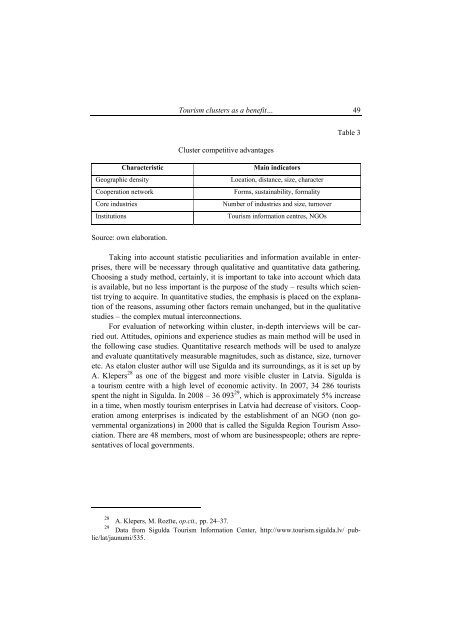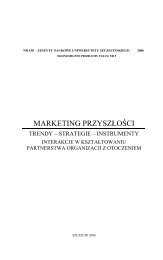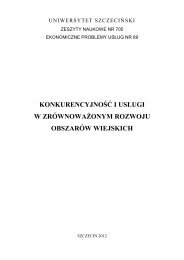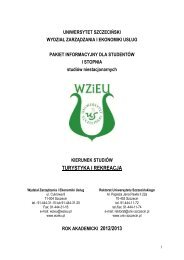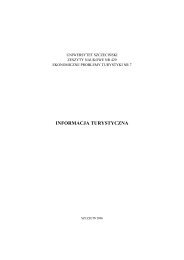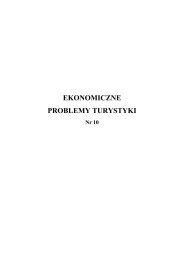Zeszyt naukowy - caÅoÅÄ - WydziaÅ ZarzÄ dzania i Ekonomiki UsÅug
Zeszyt naukowy - caÅoÅÄ - WydziaÅ ZarzÄ dzania i Ekonomiki UsÅug
Zeszyt naukowy - caÅoÅÄ - WydziaÅ ZarzÄ dzania i Ekonomiki UsÅug
You also want an ePaper? Increase the reach of your titles
YUMPU automatically turns print PDFs into web optimized ePapers that Google loves.
Tourism clusters as a benefit… 49<br />
Cluster competitive advantages<br />
Table 3<br />
Characteristic<br />
Geographic density<br />
Cooperation network<br />
Core industries<br />
Institutions<br />
Main indicators<br />
Location, distance, size, character<br />
Forms, sustainability, formality<br />
Number of industries and size, turnover<br />
Tourism information centres, NGOs<br />
Source: own elaboration.<br />
Taking into account statistic peculiarities and information available in enterprises,<br />
there will be necessary through qualitative and quantitative data gathering.<br />
Choosing a study method, certainly, it is important to take into account which data<br />
is available, but no less important is the purpose of the study – results which scientist<br />
trying to acquire. In quantitative studies, the emphasis is placed on the explanation<br />
of the reasons, assuming other factors remain unchanged, but in the qualitative<br />
studies – the complex mutual interconnections.<br />
For evaluation of networking within cluster, in-depth interviews will be carried<br />
out. Attitudes, opinions and experience studies as main method will be used in<br />
the following case studies. Quantitative research methods will be used to analyze<br />
and evaluate quantitatively measurable magnitudes, such as distance, size, turnover<br />
etc. As etalon cluster author will use Sigulda and its surroundings, as it is set up by<br />
A. Klepers 28 as one of the biggest and more visible cluster in Latvia. Sigulda is<br />
a tourism centre with a high level of economic activity. In 2007, 34 286 tourists<br />
spent the night in Sigulda. In 2008 – 36 093 29 , which is approximately 5% increase<br />
in a time, when mostly tourism enterprises in Latvia had decrease of visitors. Cooperation<br />
among enterprises is indicated by the establishment of an NGO (non governmental<br />
organizations) in 2000 that is called the Sigulda Region Tourism Association.<br />
There are 48 members, most of whom are businesspeople; others are representatives<br />
of local governments.<br />
28<br />
A. Klepers, M. Rozīte, op.cit., pp. 24–37.<br />
29<br />
Data from Sigulda Tourism Information Center, http://www.tourism.sigulda.lv/ public/lat/jaunumi/535.


